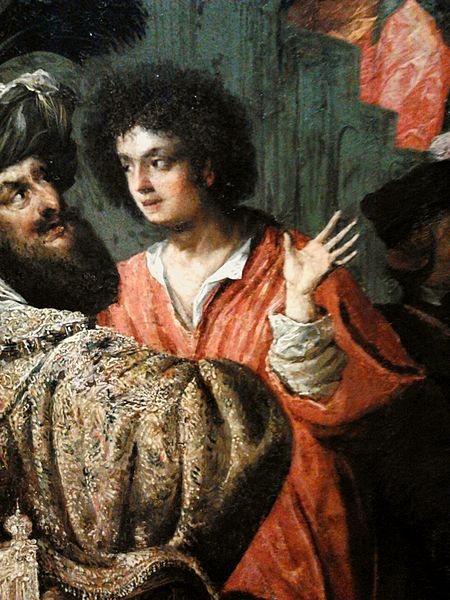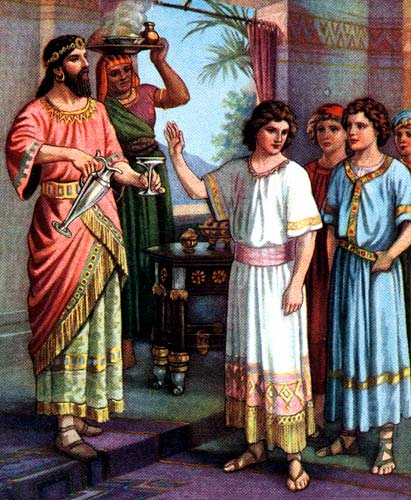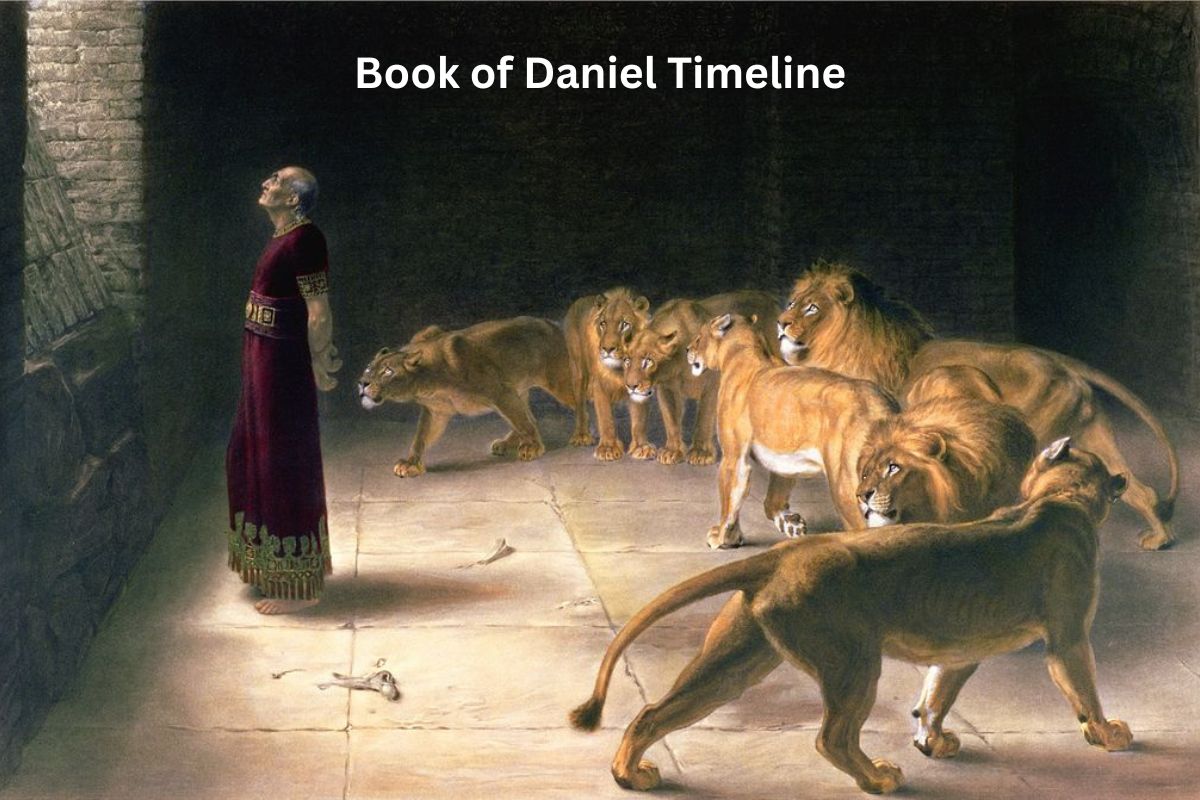The Book of Daniel is a remarkable work found in the Old Testament of the Bible, and it offers a captivating blend of history, prophecy, and faith.
The narrative revolves around the experiences of Daniel, a young Israelite taken into captivity in Babylon during the Babylonian exile in the 6th century BC.
Known for his wisdom and ability to interpret dreams and visions, Daniel’s life unfolds in a series of captivating stories and prophetic revelations.
Throughout the book, readers encounter Daniel’s unwavering devotion to his God, his remarkable encounters with powerful rulers, and his interpretation of divine visions that provide glimpses into the future of nations and God’s ultimate plan.
From the famous tales of Daniel in the lion’s den to the enigmatic prophecies of empires and the coming Messiah, the Book of Daniel remains a source of inspiration, wisdom, and spiritual insight. It stands as a testament to faith, resilience, and the enduring sovereignty of God over the affairs of humanity.
| Event | Chapter | Description |
|---|---|---|
| Early Life of Daniel | – | Daniel and his friends are taken into captivity by King Nebuchadnezzar of Babylon in 605 BC. They serve in the king’s court due to their wisdom and dream interpretation. |
| Interpretation of Nebuchadnezzar’s Dream | 2 | Daniel interprets King Nebuchadnezzar’s dream of the great statue, foretelling future kingdoms. Empires include Babylon, Medo-Persia, Greece, and Rome. |
| Fiery Furnace and Nebuchadnezzar’s Madness | 3-4 | Daniel’s friends, Shadrach, Meshach, and Abednego, are thrown into a fiery furnace but are miraculously saved. Nebuchadnezzar goes mad for a period but is eventually restored to sanity after acknowledging the power of God. |
| Belshazzar’s Feast and the Writing on the Wall | 5 | Belshazzar hosts a feast using sacred vessels from the Temple in Jerusalem. A mysterious hand writes on the wall, and Daniel interprets the message, foretelling the fall of Babylon to the Medes and Persians. |
| Daniel in the Lion’s Den | 6 | Daniel is thrown into a den of lions for refusing to stop praying to God. God protects Daniel, and he emerges unharmed the next day, leading to the king’s proclamation of faith in Daniel’s God. |
| Visions and Prophecies of Daniel | 7-12 | Daniel has several prophetic visions that provide insights into future events, including the rise and fall of empires, the coming of a “Son of Man,” and the ultimate triumph of God’s kingdom. These visions include the famous “Seventy Weeks” prophecy in Chapter 9. |
| Later Life of Daniel | – | The Book of Daniel does not provide specific details about Daniel’s later life or death, but it suggests that he continued to serve in various Babylonian and Persian administrations. |
Timeline of the Book of Daniel
1. Early Life of Daniel
Daniel and his friends, Hananiah, Mishael, and Azariah, were among the young Jewish nobility taken into captivity by King Nebuchadnezzar of Babylon in 605 BC. This event marked the beginning of the Babylonian exile, which lasted for several decades.
Despite being captives, Daniel and his friends maintained their devotion to God and their commitment to their Jewish faith. They refused to compromise their religious beliefs and dietary restrictions, leading to a test of their faith.
In a demonstration of their wisdom and faithfulness, Daniel and his friends excelled in their studies and service in the Babylonian court. They became known for their ability to interpret dreams and visions, a gift that would play a significant role in their lives later on.

2. Interpretation of Nebuchadnezzar’s Dream (Chapter 2)
In Daniel chapter 2, King Nebuchadnezzar had a troubling dream that none of his wise men could interpret. He demanded that his wise men not only interpret the dream but also tell him the dream itself.
Daniel, having received God’s revelation, was able to both reveal the content of the dream to the king and interpret its meaning. The dream involved a great statue made of various materials, such as gold, silver, bronze, iron, and clay. This statue represented a succession of empires and kingdoms.
Daniel explained that Nebuchadnezzar’s Babylonian Empire was symbolized by the head of gold, followed by the rise and fall of other empires, including the Medo-Persian Empire (silver), the Greek Empire (bronze), and the Roman Empire (iron). This prophetic vision revealed the course of world history and God’s ultimate sovereignty over nations.
3. Fiery Furnace and Nebuchadnezzar’s Madness (Chapters 3-4)
In chapters 3 and 4 of the Book of Daniel, we encounter two significant events. First, the story of Shadrach, Meshach, and Abednego, Daniel’s friends, who refused to worship a golden statue that Nebuchadnezzar had erected. As a result, they were thrown into a fiery furnace but miraculously survived, unharmed, by God’s intervention.
The second event involves King Nebuchadnezzar himself. He experienced a period of madness or insanity, during which he lived in the wild like a beast. This happened because he had become prideful and failed to acknowledge the God of Israel as the supreme ruler. After a period of suffering and humiliation, Nebuchadnezzar eventually repented and recognized God’s authority, regaining his sanity and praising God.

4. Belshazzar’s Feast and the Writing on the Wall (Chapter 5)
Chapter 5 of the Book of Daniel recounts the story of Belshazzar’s feast, which took place many years after the reign of Nebuchadnezzar. Belshazzar, the king of Babylon, hosted a lavish banquet where he used sacred vessels taken from the Temple in Jerusalem to drink wine and praise his idols.
During the feast, a mysterious hand appeared and wrote on the wall of the royal palace. The king and his wise men were unable to decipher the writing. In a state of panic, Belshazzar called for Daniel, who was known for interpreting dreams and visions.
Daniel interpreted the writing as a message from God, foretelling the imminent downfall of the Babylonian kingdom. The message, “Mene, Mene, Tekel, Upharsin,” meant that Belshazzar’s reign had been weighed and found wanting, and that the kingdom would be divided and given to the Medes and Persians.
That very night, the Medo-Persian forces led by Cyrus the Great conquered Babylon, and Belshazzar was killed. This event marked the end of the Babylonian Empire and the beginning of the Medo-Persian rule.
5. Daniel in the Lion’s Den (Chapter 6)
In Daniel chapter 6, we encounter a famous story of Daniel being thrown into a den of lions. Darius the Mede, the new ruler of the empire after the fall of Babylon, appointed Daniel as one of three administrators. His integrity and faithfulness made him a target of envy and jealousy among the other officials.
Daniel’s adversaries devised a plot to have King Darius issue a decree forbidding prayer to any god or man except the king for 30 days. Knowing that Daniel prayed to his God regularly, they caught him in the act and reported it to the king.
Despite his deep distress, King Darius was bound by his own decree and ordered Daniel to be thrown into a den of lions. However, God miraculously protected Daniel, and the lions did not harm him. The next morning, the king found Daniel unharmed and declared faith in the God of Daniel.

6. Visions and Prophecies of Daniel (Chapters 7-12)
Chapters 7 to 12 of the Book of Daniel contain a series of prophetic visions and revelations given to Daniel. These visions provide insight into future events and the ultimate triumph of God’s kingdom.
One of the most famous prophecies in the book is the “Seventy Weeks” prophecy in Chapter 9, which foretells the coming of the Messiah and the destruction of Jerusalem. It has been a subject of much interpretation and debate among scholars.
Other visions include symbolic imagery of various beasts representing future kingdoms and a vision of a “Son of Man” who receives dominion and authority from God.
7. Later Life of Daniel
The Book of Daniel does not provide detailed information about Daniel’s later life or his death. However, it suggests that he continued to serve in various administrations under different rulers, including those of the Medo-Persian Empire.
Daniel’s faithfulness, wisdom, and his ability to interpret dreams and visions made him a trusted advisor in successive empires, and his story continues to be a testament to his unwavering devotion to God throughout his life.
